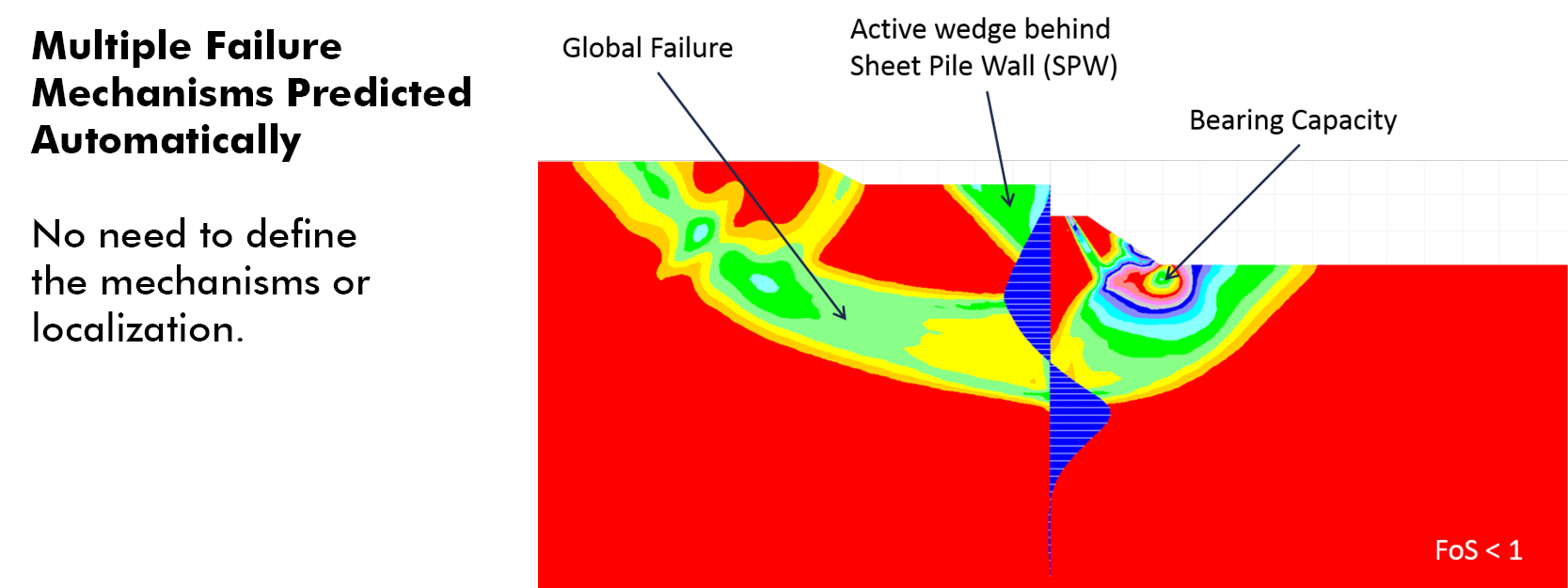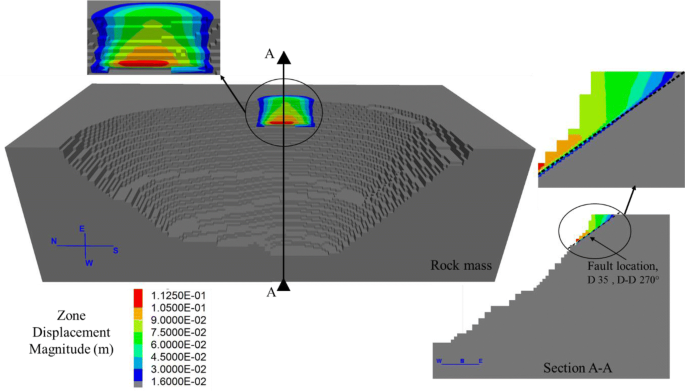
In the previous research, the elastic modulus and isotropy of SRMs were studied based on spherical blocks. Thus, the influence of parameters such as rock block content and block size distribution on the macroscopic mechanical properties of the SRM can be considered efficiently. 12 The method randomly places rock block samples with certain size, distribution and content into a specific area one by one, and quickly generates a plurality of SRM models. 11Īnother effective method is based on the random generation method (RGM), or the take-and-place method. Furthermore, the same method was used to study the effect of the rock block content on the meso-structure of an SRM model in the triaxial test.
Flac3d slop stability crack#
10 It is found by simulation that the crack usually appears at the soil-rock interface, which is the weak part of SRMs. In addition, CT scanning technology was used to reconstruct a typical longitudinal section of a triaxial specimen. The aforementioned method was applied to simulate large-scale direct shear tests on SRMs, 1 and the results show that the existence of the rock blocks will greatly affect the distribution of the internal stress field and the failure mechanism.

And the shape of the rock blocks in the simulation is similar to the actual one in nature. Combined digital image processing technology with finite element method, a numerical model of heterogeneous geomaterials is constructed, which is called finite element method based on digital image processing.7, 8, 9 Based on geometry vectorization transformation, the method transforms the actual meso-structure of geomaterials from image to digital model, which can characterize the heterogeneity of geomaterials and can be used for finite element calculation. Then a digital model is constructed after digital image processing.

The method obtains an image of the SRM by techniques such as photography, CT scanning and X-ray imaging. One of which is based on digital image processing (DIP). 2, 3 In practice, the traditional assumption of a homogeneous geomaterial is obviously insufficient for the exact analysis of SRM due to its multi-directionality and discontinuity.4, 5, 6Īt present, there are mainly two methods for constructing an SRM model. Because it widely exists in nature, SRM has been a rather interesting topic in the geotechnical engineering field such as landslides and mudslides. The soil-rock mixture (SRM) is a multiphase system composed of high-strength rock masses and low-strength soil, 1 which is a typical heterogeneous geomaterial. And the influence of block size distribution and rock content on the stability of soil-rock mixture slope has a coupling effect. The results show that the soil-rock mixture slope exhibits multiple sliding zone under the combined action of various plastic zone expansion. Furthermore, the stabilities of soil-rock mixture slopes with different block size distribution and rock content are investigated. Next, an improved intersection detection algorithm based on axis-aligned bounding box is developed to construct the digital model of the soil-rock mixture slope. Then, a corresponding rock block library is established. First, through digital image processing, a large number of rock block contours that are analogous with reality are obtained.

Using this method, rock blocks of arbitrary shapes can be considered and the construction of soil-rock mixtures with different block size distribution and rock content can be realized. A new method for constructing a digital model of soil-rock mixture is proposed in this paper.


 0 kommentar(er)
0 kommentar(er)
